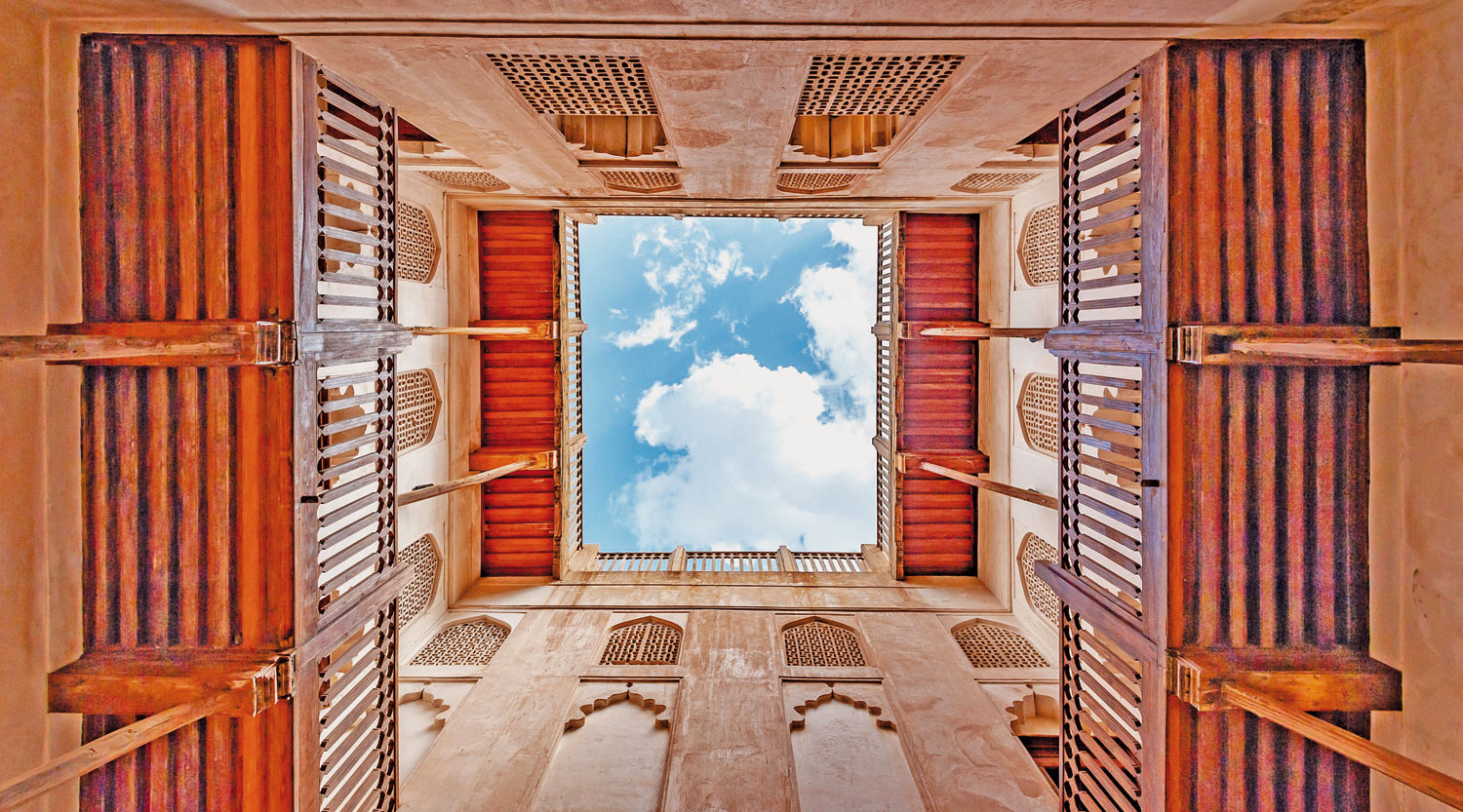

The Sultanate of Oman is an amalgamation of historical natural and man-made wonders — from the soaring heights of the Hajar Mountains, to ruins of Al Hamra and even the forts that tell tales of strongholds of the past.
Bahla is famous all over the country for being home to the Sultanate’s pottery hub and an area of great history and importance. Because of this, Unesco has named Bahla as a World Heritage site in 2002.
Bahla is also known for its mud castles and palatial forts scattered all over the region built through many centuries. Each of them tell a different story of Oman’s historic past but always projected strength and cultural importance. One such wonder that tells its own story is the Jabreen Castle built in the 17th century by Imam Bel’arab bin Sultan Al Yarubi.
Jabreen castle at first glance looks different from the rest of the castles seen around the country. On cursory inspection the castle wasn’t fortified, there were no visible defence mechanisms. This is largely because it was built at a time of peace.

Dominating the area where it was built, the building has signature brown mud walls with balconies decorated with wooden railings and scalloped archways looking down into the courtyard below.
Imam Bel’arab bin Sultan Al Yarubi was a man who loved science and art and this is visible throughout the castle.
The structure is several storeys’ tall, has two large towers and numerous rooms like halls, meeting rooms, a courtroom and even a library along with a classroom that gave Quran lessons.
The Interior of the castle is a display of beautifully decorated windows, balconies, doors, and arches inscribed with Arabic calligraphy and other designs popular in that era, but the main attraction of the castle is its beautifully painted ceilings made with date palms also common in the area. The artwork still stands out even today with its vibrant red tones and floral designs. The beautiful intricate architectural details make Jabreen Castle the perfect authentic expression of Omani traditional crafts.
Jabreen Castle is separated into two sections: the first part has two storeys and is 16 metres high and the second part of the castle consists of three storeys.
There were two rooms that stood out in the entire castle, they were not only beautifully decorated with carpets but the painted ceilings were also a work of art.
These two rooms are: The Sun and Moon Room: This beautifully named room was the Imam’s majlis where he met with important guests especially for state and vital discussions and consultations.
The room was built with wind patterns and the movement of the Sun and Moon in mind. Even in the midst of summer, the room stays cool because the strategic placement of its 14 windows. The room also has a constant source of light — the sun in the morning and the moonlight in the evenings.
Imam Protection Room: This room was built with an idea to allow the guards and soldiers of the Imam to hide underneath the room with easy access to keep the ruler safe. This room was used when the Imam met with guests he didn’t know or trust, from what we could see there were four hideouts under the room all connected with each other.

During our visit, guests and tourists were not only intrigued by the ingenious architecture but found many of its sections functional. Several of the tourists spent hours lying flat on the majlis floors admiring the beautifully painted ceilings.
Another attraction of the Jabreen castle are the carved wooden beams that after all these years has maintained its vibrant hues. Lying down, you can see the detailed floral motifs almost mimicking the famously known Persian rugs whilst others had lunar and solar motifs. In the Sun and Moon Room, each beam had ellipses painted on them that are said to be representations of god eye keeping a watch over the guests in the room.
Standing in the brightly lit yet cool temperature rooms, it is difficult to imagine a life without peace and tranquillity whilst living in its halls. It is here that the Imam Bel’arab was laid to rest, in a quiet corner on the ground floor, where he was said to have said his daily prayers in modesty of a plainly decorated chamber on the mud floors.
Knowing the history of the man who built it, roaming through its ancient pathways becomes nostalgic journey to the beauty of ancient Oman.
Jabreen castle is a definite must visit especially for its intricate interior and exterior decors. For those wanting to visit, the castle is open Saturday to Thursday from 9 am to 4 pm and on Fridays from 8 am to 11 am. The entry fee is 500bz for adults and there is an option to avail an audio guide at an added cost.
The castle is a two-hour drive from the capital city of Muscat, via the Nizwa Road. A four-wheel drive car is not required. The GPS coordinates for Jabreen are N22’54’55” E57’14’58”
Even after 300 years, Jabreen Castle has not only retained its original beauty but also its rich history and vibrant interiors. This was made possible by the impeccable restoration efforts of the government of Oman to maintain, respect and keep safe its history and roots.
Oman Observer is now on the WhatsApp channel. Click here



